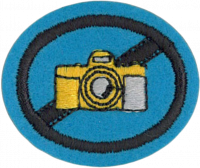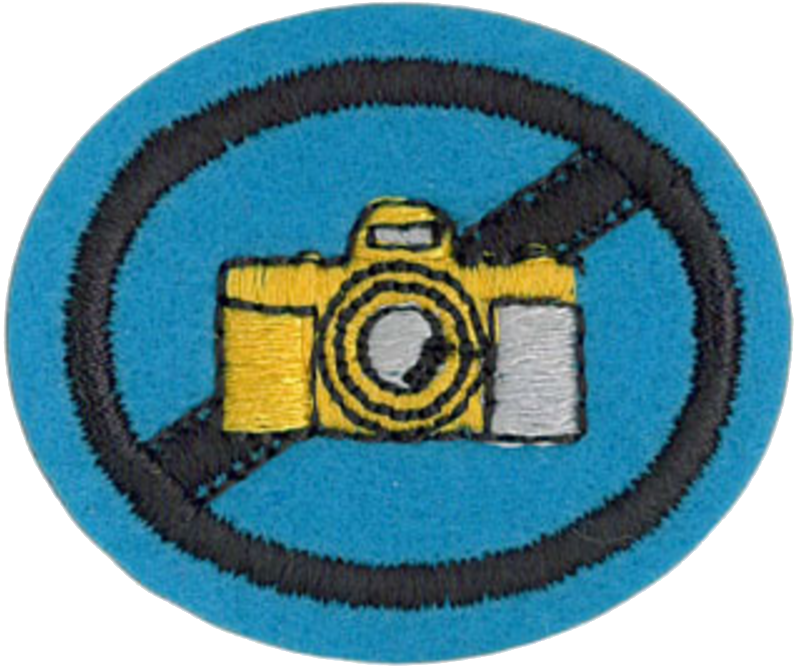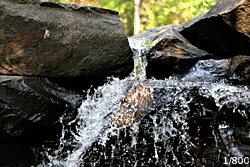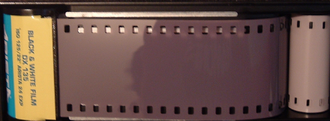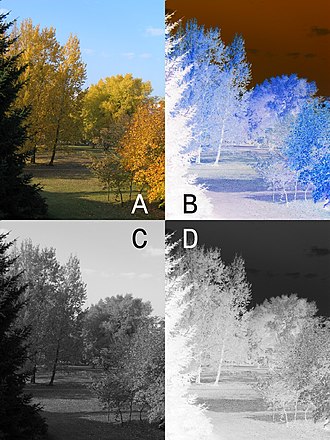Difference between revisions of "AY Honors/Photography/Answer Key/es"
(Created page with "Especialidades JA/Fotografía/Respuestas") |
(Created page with "</noinclude> <!-- 1. Explicar los principios del funcionamiento de la cámara, qué hace el lente de la cámara, el efecto de la luz en la película sensible a la luz y la acc...") |
||
| Line 2: | Line 2: | ||
<section begin="Body" /> | <section begin="Body" /> | ||
{{ansreq|page={{#titleparts:{{PAGENAME}}|2|1}}|num=1}} | {{ansreq|page={{#titleparts:{{PAGENAME}}|2|1}}|num=1}} | ||
| − | <noinclude> | + | <noinclude></noinclude> |
| − | </noinclude> | + | <!-- 1. Explicar los principios del funcionamiento de la cámara, qué hace el lente de la cámara, el efecto de la luz en la película sensible a la luz y la acción de los reveladores. --> |
| − | <!-- 1. | ||
| − | |||
| − | |||
| − | |||
<div lang="en" dir="ltr" class="mw-content-ltr"> | <div lang="en" dir="ltr" class="mw-content-ltr"> | ||
| Line 54: | Line 50: | ||
</div> | </div> | ||
| − | + | <noinclude></noinclude> | |
| − | <noinclude | ||
| − | |||
{{CloseReq}} <!-- 1 --> | {{CloseReq}} <!-- 1 --> | ||
{{ansreq|page={{#titleparts:{{PAGENAME}}|2|1}}|num=2}} | {{ansreq|page={{#titleparts:{{PAGENAME}}|2|1}}|num=2}} | ||
| − | <noinclude> | + | <noinclude></noinclude> |
| − | </noinclude> | + | <!-- 2. ¿Qué se entiende por la «velocidad» de la película? ¿Qué significa ASA/ISO? --> |
| − | <!-- 2. | ||
| − | |||
| − | |||
| − | + | {{clear}} | |
| − | |||
| − | |||
| − | |||
| − | |||
<div lang="en" dir="ltr" class="mw-content-ltr"> | <div lang="en" dir="ltr" class="mw-content-ltr"> | ||
| Line 75: | Line 62: | ||
</div> | </div> | ||
| − | + | <noinclude></noinclude> | |
| − | <noinclude | ||
| − | |||
{{CloseReq}} <!-- 2 --> | {{CloseReq}} <!-- 2 --> | ||
{{ansreq|page={{#titleparts:{{PAGENAME}}|2|1}}|num=3}} | {{ansreq|page={{#titleparts:{{PAGENAME}}|2|1}}|num=3}} | ||
Revision as of 13:06, 5 May 2021
1
A pinhole camera is a camera without a conventional glass lens. An extremely small hole in a very thin material can focus light by limiting all rays from a scene through a single point. To produce a reasonably clear image, the aperture has to be a small pinhole on the order of 0.5 mm (0.02 inches) or less. The shutter of a pinhole camera usually consists of a hand operated flap of some light-proof material to cover and uncover the pinhole. Pinhole cameras require much longer exposure times than conventional cameras because of the small aperture; typical exposure times can range from 5 seconds to hours or days.
Surprise! A camera is nothing more than:
- an optical element, usually the lens, but here, the pinhole.
- a chemical element, or, the film.
- a mechanical element, usually the camera body.
In our pinhole camera, light from various points of the tree travels through the tiny pinhole and reaches the back of our pinhole camera where the image of the tree is upside down. The trick is to correctly expose the film which is at the back of the camera.
Camera Lens
A camera lens usually has an aperture adjustment mechanism to control the amount of light that may pass. It also has a shutter, to control the length of time during which light may pass through the lens.
Light on Film
Photographic film is a sheet of plastic which is coated with an emulsion containing light-sensitive silver halide salts with variable crystal sizes that determine the sensitivity and resolution of the film. When the emulsion (in this film) is subjected to sufficient exposure to light it forms an invisible image.
In black-and-white photographic film there is usually one layer of silver salts. When the exposed grains are developed, the silver salts are converted to metallic silver, which block light and appear as the black part of the film negative.
Color film uses at least three layers. Dyes added to the silver salts make the crystals sensitive to different colors. Typically the blue-sensitive layer is on top, followed by the green and red layers. During development, the silver salts are converted to metallic silver, as with black and white film. The by-products of this reaction form colored dyes. The silver is converted back to silver salts in the bleach step of development. It is removed from the film in the fix step. Some films, like Kodacolor II, have as many as 12 emulsion layers, with upwards of 20 different chemicals in each layer.
Developers
In film developing, photographic developer (or just developer) is a chemical that makes the latent image on the film (or print) visible. It does this by reducing the silver halides that have been exposed to light to metals of elemental silver in the gelatine matrix. As a generalisation, the longer a developer is allowed to work, the greater the degree of reduction of the silver halide crystals to silver and therefore the darker the image.
2
In the ISO linear scale, which corresponds to the older ASA scale, doubling the speed of a film (that is, halving the amount of light that is necessary to expose the film) implies doubling the numeric value that designates the film speed. In the ISO logarithmic scale, which corresponds to the older DIN scale, doubling the speed of a film implies adding 3° to the numeric value that designates the film speed. For example, a film rated ISO 200/24° is twice as sensitive as a film rated ISO 100/21°.
3
Shutter speed is the time for which the shutter is held open during the taking of a photograph to allow light to reach the film or image sensor (in a digital camera).
Combined with adjusting of the lens aperture, the shutter speed regulates how much light the camera will record. For a given exposure, a fast shutter speed demands a larger aperture to avoid under-exposure, just as a slow shutter speed is offset by a very small aperture to avoid over-exposure. Long shutter speeds are often used in low light conditions, such as at night.
Shutter speed is measured in seconds. A typical shutter speed for photographs taken in sunlight is 1/125th of a second. In addition to its effect on exposure, shutter speed changes the way movement appears in the picture. Very short shutter speeds are used to freeze fast-moving subjects, for example at sporting events. Very long shutter speeds are used to intentionally blur a moving subject for artistic effect.
Film speed is the measure of a photographic film's sensitivity to light. Stock with lower sensitivity (lower ISO speed rating) requires a longer exposure and is thus called a slow film, while stock with higher sensitivity (higher ISO speed rating) can shoot the same scene with a shorter exposure and is called a fast film.
4
Photography [fә'tɑgrәfi:],[foʊ'tɑgrәfi:] is the process of recording pictures by means of capturing light on a light-sensitive medium, such as a film or sensor. Light patterns reflected or emitted from objects expose a sensitive chemical or electronic medium during a timed exposure, usually through a photographic lens in a device known as a camera that also stores the resulting information chemically or electronically.
The word comes from the Greek words φως phos ("light"), and γραφίς graphis ("stylus", "paintbrush") or γραφή graphê ("representation by means of lines" or "drawing"), together meaning "drawing with light." Traditionally, the product of photography has been called a photograph, commonly shortened to photo.
Photography gained the interest of many scientists and artists from its inception. Scientists have used photography to record and study movements, such as Eadweard Muybridge's study of human and animal locomotion in 1887. Artists are equally interested by these aspects but also try to explore avenues other than the photo-mechanical representation of reality, such as the pictorialist movement. Military, police and security forces use photography for surveillance, recognition and data storage. Photography is used to preserve memories of favorites and as a source of entertainment.
5
5a
Framing & Direction of Lighting
When we use our eyes, we see the world in three dimensions. The biggest reason for this is because we have two eyes about 1 1/2" apart that give us "two photos" that our brain then interprets as being three-dimensional--big objects are closer than small objects.
However, cameras only have one "eye" the lens, so we have to intentionally take pictures that are "extra" 3-dimensional. One way we can do this by Framing.
Framing uses some element in the photograph to act as a foreground or middle-distance frame which overlaps or highlights the main subject of your photo.
For example, if you're taking a picture of rolling hills, give your picture "depth" by putting a tree or fence post that is closer to you on the right or left hand side of the photograph.
Other examples of Frames include: a tree branch, rocks on a seashore, a friend or an archway.
5b
Have you ever gotten pictures developed and all you see is a "blur" that was supposed to be a family member? Maybe you've taken a picture through the window of a car while its been moving. This is called camera blur and is most often caused when you're using a "fancy" SLR camera where the exposure setting is 1/125th of a second or slower. However, it can also happen when you don't practice good "camera posture" when composing your photograph.
When you're taking pictures, is very important that the camera doesn't wiggle as you take the picture! Some helpful hints for keeping this from happening are:
- Use both hands to steady the camera. One-handed picture taking is hazardous to your photographic health!
- If you're using a fancy SLR camera, be sure your exposure time is set equal to or greater than your film speed (ex. If you're using 200 speed film, have it set to 1/250, 1/500, or 1/1000). Otherwise use a table, wall or something else steady to steady yourself as you take the photo.
- Most point-and-shoot cameras have this film/exposure time ratio "built-in" to their cameras.**
- The best way to hold a camera in a comfortable position but rigidly is to form an imaginary tripod with the camera pressed against your forehead and your elbows against your body. Take a breath, partially exhale, and gently press the shutter button.
- Be careful not to get any of your fingers or the camera chord in front of the flash or the lens!!
5c
Direction of lighting, Quality of Lighting, & Rule of Thirds Quiz question (not really. . .) Should the sun be behind the subject you're photographing, beside the subject, or shining on the subject?
People used to think that you could only take good pictures if the sun was behind the photographer (YOU!) shining on the subject they were taking a picture. But that's not true.
For instance, if you want to take a sunset picture and want your framing subject (such as a person walking down the beach) to be a silhouette, the sun should be behind him, shining toward you (back lighting).
Lighting:
Front lighting is best when you want to see the details, like if you're taking a close-up of someone's face. A downfall is, that if the lights too bright, such as in the middle of the day, there might be "glare" in your subject.
Side lighting is great for bringing out shapes and textures, such as a rocky mountain cliff or tree bark. These two photos are from Mono Lake In California. Notice how different the same rocks look depending on where the light is coming from?
Back lighting is lighting from behind the subject, tends to hide the subject, forming a silhouette. Some good places to use back lighting are a camporee flagpole at sunset, a cow/horse grazing at sunset, or a playground after everyone has gone home for the evening.
Quality of Lighting - Time of Day, shading, etc.
- The best light conditions are 1 1/2 hours before sunset or the first hour after sunrise. The reason is that the light isn't SO BRIGHT that it washes out the colors in your picture, but at the same time the shadows are long (which makes side lighting pictures look extra special). Also, the sunset or sunrise gives off a kind of "pink" or "orange" light, which makes many nature pictures look very friendly & special. If you want to know when sunrise and sunset are going to be, check out www.adventist.org's sunset calendar!
- Be careful of evening shadows when photographing people. long shadows on faces hide features and expressions!
- Pictures taken during the middle of the day will be "stark" with hard lines and minimal shadows. Buildings & some landscapes such as mountains look especially regal or majestic during the middle of the day. Just remember that if you take a picture during the middle of the day, shade the top of the lens of your camera by placing one of your hands or a piece of paper horizontal about 2" above the lens to form a "shade for the lens. This will keep pink & blue "sparks" from showing up on your photos.
- When there is no sunshine (on a rainy day) don't give up on taking pictures! Zoom in close on flowers and other colorful objects. The color will be extra deep since its not being "washed out" by the sun. Fog which often accompanies soft rain also makes a very nice soft hazy look. Just be sure to protect you lens from specks of rain!
5d
This technique moves the camera at the same speed of your subject while the picture is being taken. For example, if you are taking a picture of a runner going from your left to your right, you would 'pan' or move your camera with the runner (subject) in your viewfinder and take the picture. This causes the background of your picture to blur because of the camera movement, however, since your subject is moving at the same speed as your camera, your subject will be in focus.
5e
A Picture looks best when you imagine a tic-tac-toe board on top of your picture you're going to take. Remember that we're wanting a photo to look 3 dimensional! Part of that is arranging it in combination with "Framing" and "Leading Lines" techniques, but putting objects in "3rds" on the photo.
For example: In a mountain scene the landscape in the bottom screen--maybe even a tree or rock to help it look "more 3-D"-- the mountains in the middle 3rd, and the sky in the top third.
Another Illustration: If you're taking a picture of a landscape with puffy clouds, take one picture where 2/3 of the picture is composed of the clouds and the landscape fills the bottom 1/3. Then try with 1/3 clouds and 2/3 landscape. Notice how different this same landscape looks with the "3rds" changed from top to bottom!
5f
Subjects look different depending on where you are in relation to them when you take the picture.
You'll need three photos for this requirement, though they don't have to be of the same object. A High-angle, Mid-angle, and Low-angle photograph.
High angle means: looking down on your subject
Mid-angle means: looking at your subject straight on.
Low-angle means: looking up at your subject
For this requirement, take a subject, such as some tall straight trees, and take a picture looking straight at them, then another one by laying on the ground looking up through the trees. Did the angle make a difference?
5g
5h
Have you ever taken a picture of a beautiful flower or some animals but when the photo came back, you had to explain to friends "that dot is a pretty rose," and "that dot over there is a buffalo."?
Filling the frame is all about making your subject (what you're taking a picture of) fill up most of the picture frame. This means standing closer to the subject than you're ordinarily used to doing and making sure there's not a lot of "green space" around your subject.
Some ideas for Pathfinders:
- Take a picture of your whole youth group. Be sure there are some standing and some standing/sitting in front of them. Then, get close enough so that there is almost NO "background green space" around them. You'll be impressed with how nice it is to have a photo that shows the expressions on everybody's face.
- Take a picture of your best friend while they're eating at a campout or lockin. Don't try to take a picture of the whole room, but zoom in on their upper body and the top of the table with the plate of food. You'll both laugh when you see the photo that shows how shocked your friend was at your "surprise" picture.
5i
Leading lines are anything in a photograph that will help lead your eyes towards the main subject. For example, do you want people eyes to travel "down the road into the sunset, just like the bus is doing? Or, do you want people to see the big cafeteria on the hill where you and your fellow pathfinders ate all weekend?
Leading Lines also help your photograph's "depth." If your eyes are able to wander into the picture, then your brain will think the picture looks more real, like the real 3-D world we live in.
Ideas for pathfinders:
- Roads: take a picture of a windy road that leads to nowwhere; The road that leads to camporee or the road into the campsite you're staying at this weekend may also be a good leading line.
- Trails
- Fence Posts / Fence lines
- Tall buildings or tall trees. Take pictures straight up, and use those tall lines to guide your eyes to a Mountain peak, or to the sun / moon shining overhead.
5j
- The best light conditions are 1 1/2 hours before sunset or the first hour after sunrise. The reason is that the light isn't SO BRIGHT that it washes out the colors in your picture, but at the same time the shadows are long (which makes side lighting pictures look extra special). Also, the sunset or sunrise gives off a kind of "pink" or "orange" light, which makes many nature pictures look very friendly & special. If you want to know when sunrise and sunset are going to be, check out www.adventist.org's sunset calendar!
- Be careful of evening shadows when photographing people. long shadows on faces hide features and expressions!
- Pictures taken during the middle of the day will be "stark" with hard lines and minimal shadows. Buildings & some landscapes such as mountains look especially regal or majestic during the middle of the day. Just remember that if you take a picture during the middle of the day, shade the top of the lens of your camera by placing one of your hands or a piece of paper horizontal about 2" above the lens to form a "shade for the lens. This will keep pink & blue "sparks" from showing up on your photos.
- When there is no sunshine (on a rainy day) don't give up on taking pictures! Zoom in close on flowers and other colorful objects. The color will be extra deep since its not being "washed out" by the sun. Fog which often accompanies soft rain also makes a very nice soft hazy look. Just be sure to protect you lens from specks of rain!
5k
5l
Most flashes should be used no closer to a subject than 6 feet. and more than 20 feet away. Any closer and it will "wash out" your subject, (depending on flash), and any farther away, the light won't even reach. For example: Have you ever seen people use a flash at a football game, or in a large stadium in hopes of getting photos of the people on the field? The flash won't help because its too far away!
Don't try to use a flash when there is a reflective object directly in front of the lens. For example, a mirror or window behind your friends, or the fishtank glass between you and that shark at SeaWorld. Move off to the side diagonally a little, so that the light, when it flashes off the reflective object, won't bounce directly back to your lens, but instead will bounce into empty space beside you!
Use the flash to fill in shadows. If your subject has side-lighting erasing the features on its face that you want to capture on film, use the flash to erase the shadows. BE SURE you're far enough away, or the whole picture will be blotted out!
Some ideas for Pathfinders:
- Try using a flash when your friends are in a dark cave or room. Arrange them 6 feet away from your camera, then take 2 pictures. One with a flash and one without. Notice the difference. Now take one with your friend(s) only 3 feet away. What happened?
- At your next campout, just before sunset grab some friends and have them stand in front of camp, with the sunlight coming from one side, casting shadows on their faces. Take 2 pictures. One with fill-in flash, and one without. What was the difference?
6
6a
Photographic film is a sheet of plastic (polyester, nitrocellulose or cellulose acetate) which is coated with an emulsion containing light-sensitive silver halide salts (bonded by gelatin) with different crystal sizes that determine the sensitivity and resolution of the film. When this emulsion is subjected to sufficient exposure to light, it forms a latent (invisible) image. Chemical processes are then applied to the film to create a visible image, in a process called film developing.
In black-and-white photographic film there is usually one layer of silver salts. When the exposed areas are developed, the silver salts are changed to metallic silver, which block light and appear as the black part of the film negative.
Here is additional information on negatives for a more complete perspective on film & negatives
In photography, a negative may refer to 3 different things, although they are all related.
A negative
Film for common 35mm cameras comes in long narrow strips of chemical coated plastic. As each image is captured by the camera onto the film strip, the film strip advances so that the next image is projected onto unexposed film. When the film is developed it is a long strip of small negative images. This strip is often cut into sections for easier handling. In larger cameras this piece of film may be as large as a full sheet of paper, or even larger, with a single image captured onto one piece. Each of these negative images may be referred to as a negative and the entire strip or set of images may be collectively referred to as negatives. These negative images are the master images, from which all other copies will be made, and they are treated with care and handled with caution.
Negative image
A positive image is a normal image. A negative image is a tonal inversion of a positive image, in which light areas appear dark and vice versa. A negative color image is additionally color reversed, with red areas appearing cyan, greens appearing magenta and blues appearing yellow.
Negative film
Due to happenstance, many photographic processes create negative images: the chemicals involved react when exposed to light, and during developing these exposed chemicals are retained and become opaque while the unexposed chemicals are washed away. However, when a negative image is created from a negative image (just like multiplying two negative numbers in mathematics) a positive image results (see Color print film, C-41 process). This makes most chemical based photography a two step process. These are called negative, films and processes. Special films and development processes have been devised such that positive images can be created directly from film, these are called positive, or slide, or (perhaps confusingly) reversal film (see Transparency, Black and white reversal film, E-6 process).
6b
Slides (otherwise called transparency) is a still, positive image created on a transparent base using photochemical means. This is opposite of negatives.
The earliest color photography was the Autochrome process. This used an additive 'screen-plate' method which produced a color slide, but was fairly dim and the color resolution was limited by the fineness of the screen-plate.
When developing a slide, the film is first developed to a negative image and then reversed to a positive image.
Eventually, a practical method using a 'subtractive' method was the Kodachrome process, the first commercially successful amateur color film, introduced in 1935. It produced much brighter color transparencies. The Kodachrome K-14 developing process is very complicated and requires technicians with extensive chemistry training, as well as large machinery which is extremely difficult to operate. This complexity discourages use by home amateurs or small laboratories. In the early 1990s Kodak offered the "K-Lab" process to small labs in an attempt to increase the availability of the K-14 process, but ultimately this was not successful; with the final two K-Lab -equipped labs (Horiuchi Color in Tokyo and Kodak's own plant in Lausanne) shutting down and Kodak discontinuing the "B-I-B" (bag-in-box) K-14 chemistry required for the K-Lab.
After K14 processing was discontinued, Ektachrome and Fujichrome slide films are the only remaining color reversal films that can be readily processed in many cities and larger professional photo studios.
The E-6 process is used for developing Ektachrome, Fujichrome, and other color reversal (slide) photographic film.
Here's the three step processing:
- Pre-warm
- First developer and reversal
- First wash
- Color developer
- Second wash
- Bleach-Fix
- Wash
- Stabilizer (final rinse)
Here's the more technical conventional six step processing.
